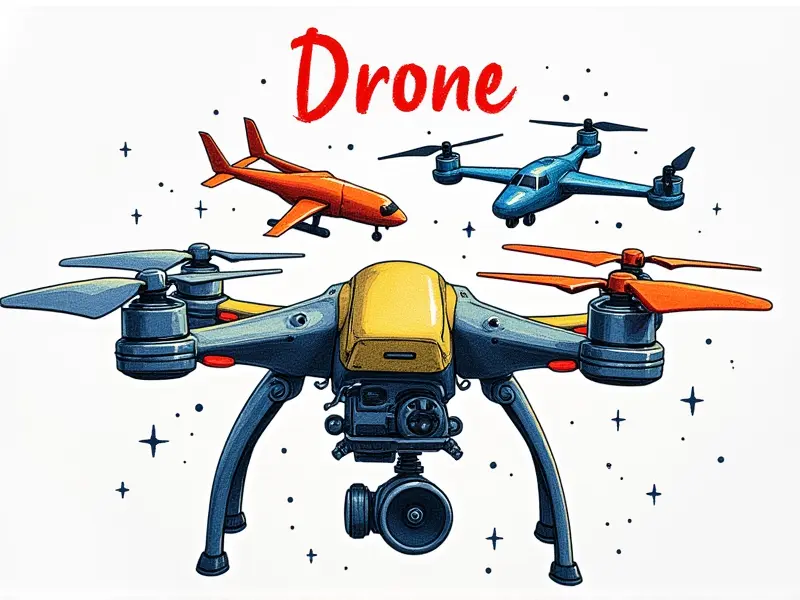How to fly DJI Mavic Air?

How to Fly Your DJI Mavic Air Drone: A Comprehensive Guide
Welcome to the world of aerial photography with your new DJI Mavic Air drone. This guide is designed to help you master every aspect of flying this advanced device, from basic flight controls to expert-level maneuvers.
Mastering the DJI Mavic Air Flight Basics
To get started with your DJI Mavic Air, it's crucial to understand the fundamental flight mechanics. Begin by familiarizing yourself with the remote controller and its buttons:
- Power Button: Turn on the drone.
- Return to Home Button: Automatically return the Mavic Air to your starting location.
- Modes Switch: Toggle between different flight modes such as P mode (Position Mode) and A mode (Attitude Mode).
The drone's camera features should also be explored, including:
- Camera Shutter Button: Capture photos or start/stop video recording.
- Zoom Slider: Adjust the optical and digital zoom for framing shots precisely.
Understanding these basics will lay a strong foundation for your flying journey with the Mavic Air.
Quick Start Guide for DJI Mavic Air
The process of setting up your new Mavic Air is straightforward. Follow these steps:
- Unfold the drone: Carefully unfold each arm and propeller.
- Charge the battery: Ensure both the drone and remote controller are fully charged before flying.
- Connect to Wi-Fi: Pair your smartphone with the Mavic Air's dedicated app via Wi-Fi.
- Calibrate the compass and IMU: Follow the on-screen prompts in the DJI GO 4 app for accurate flight data.
This setup ensures that you're ready to take off safely and efficiently.
Top Tips for Flying Your New Mavic Air
- Practice Hovering: Master the art of hovering in place before attempting more complex maneuvers.
- Use GPS Signals: Ensure strong GPS signals by flying in open areas away from tall buildings or dense forests.
- Battery Management: Always check your battery level and land when it drops below 20% to avoid an emergency landing.
These tips will help you maintain control of the drone during flights, ensuring a smooth experience every time.
Beginner's Guide to DJI Mavic Air Navigation
Navigating with your Mavic Air involves understanding its movement controls:
- Forward/Backward Movement: Move the stick forward or backward to navigate in those directions.
- Sideways Movement: Slide the stick left or right for lateral movements.
- Climbing and Descending: Adjust the pitch of the drone by tilting the sticks up or down.
Mastery over these controls is essential for smooth, controlled flights.
Essential Skills for Flying the DJI Mavic Air
To become proficient with your Mavic Air, focus on developing skills such as:
- Docking and Takeoff: Learn how to safely dock and undock the drone from its charging station.
- Obstacle Avoidance: Utilize the advanced obstacle avoidance sensors for safe flying in cluttered environments.
- Manual Mode Flying: Experiment with manual mode (A mode) to gain full control over your drone's movements.
These skills will enhance your ability to capture stunning aerial footage and navigate challenging terrains.
Easy Steps to Mastering the Mavic Air Drone
Mastery comes from practice. Follow these steps:
- Start with Basic Flight Patterns: Begin by flying simple patterns like circles or figure eights.
- Increase Complexity Gradually: As you gain confidence, introduce more complex maneuvers such as flips and rolls.
- Practice in Different Environments: Test your skills in various conditions to adapt to different flying scenarios.
This gradual progression will build your expertise over time.
Navigating with Ease on DJI Mavic Air
The Mavic Air's navigation features are designed for precision and ease:
- Follow Me Mode: Use this feature to have the drone follow you automatically, capturing unique perspectives.
- ActiveTrack: Track moving objects like people or animals by selecting them within the app interface.
These advanced features make it easier for beginners to capture dynamic shots without extensive piloting experience.
Best Practices for Flying Your DJI Mavic Air
- Check Regulations: Always adhere to local drone regulations before flying in public spaces or restricted areas.
- Maintain Line of Sight: Keep the drone within your visual range at all times for safe operation.
- Regular Maintenance: Inspect and clean the drone regularly to ensure optimal performance.
Following these best practices will help you avoid common pitfalls and enjoy a trouble-free flying experience.
Expert Advice for New Mavic Air Pilots
- Leverage Third-Party Apps: Explore apps beyond the official DJI GO 4 to unlock additional features and capabilities.
- Join Communities: Engage with other pilots through forums, social media groups, or local clubs for tips and support.
- Continuous Learning: Stay updated on new firmware releases and software updates that bring enhanced functionalities to your drone.
This advice will help you stay ahead of the curve as a Mavic Air pilot.
Optimal Settings for DJI Mavic Air Flight
- Battery Mode: Use Balanced mode for optimal flight time and performance balance.
- Sensor Calibration: Regularly calibrate sensors to ensure accurate GPS and compass readings.
- Wind Resistance Settings: Adjust these settings based on weather conditions to maintain stability during flights.
Tuning these settings will maximize the drone's efficiency and reliability under various flying conditions.
Conclusion
Mastery of your DJI Mavic Air involves a combination of practical skills, understanding of its features, and adherence to best practices. By following the advice provided in this guide, you'll be well on your way to becoming an expert pilot capable of capturing breathtaking aerial footage.

